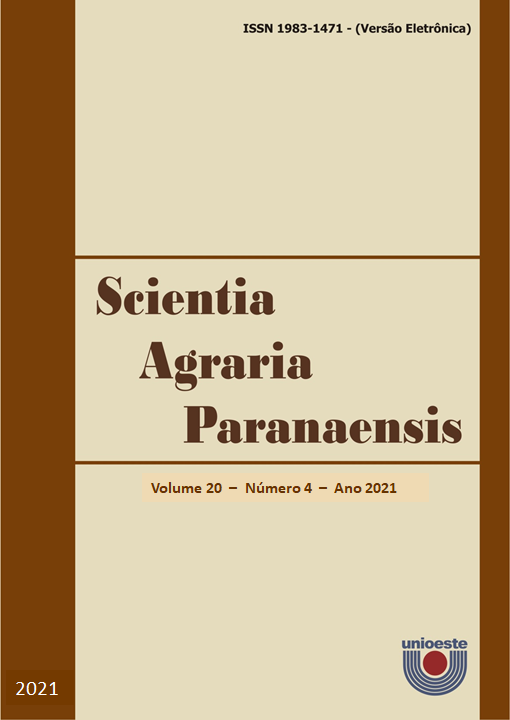Physicochemical analysis of Brazilian spinach grown under doses of urea
DOI:
https://doi.org/10.18188/sap.v20i4.28202Resumo
The Althernanthera sessilis L. is a non-conventional food plant (PANC) popularly known as Brazilian spinach, rich in minerals and proteins, contributing to human nutrition. In view of the above, the present work aimed to analyze physicochemically Brazilian spinach plants cultivated under doses of nitrogen, in the form of urea. The experiment was carried out at the Experimental Garden of the Universidade Federal do Acre (UFAC), from November 25, 2017 to February 3, 2018 and the laboratory analyzes were carried out at the Unidade de Tecnologia de Alimentos (UTAL/UFAC). The delimitation used was completely randomized, containing 4 treatments (0; 1.5; 3.0 and 5.0 g), five replications and one plant per replication. The vegetative material was obtained in Porto Velho (RO) and the seedlings obtained by cuttings were cultivated in 500 mL polyethylene cups for 15 days and then transferred to pots with a capacity of 9 L. On February 3, leaves and stems of the plant were collected and analyzes were performed on a wet basis, except ash, such as pH, titratable acidity, ascorbic acid, soluble solids and proteins. Significant differences were observed for pH, titratable acidity, ascorbic acid and proteins and a linear increase of the contents with the increase of the urea dose. Nitrogen fertilization up to a dose of 5 g was efficient for the variables of titratable acidity, proteins and ascorbic acid. The highest dose of urea provided an increase of about 24% in protein content, however, even without fertilization, Brazilian spinach showed great potential in terms of protein content, being able to be consumed to supply part of the protein demand.
Downloads
Publicado
Como Citar
Edição
Seção
Licença
Aviso de Direito Autoral Creative Commons
Política para Periódicos de Acesso Livre
Autores que publicam nesta revista concordam com os seguintes termos:
1. Autores mantém os direitos autorais e concedem à revista o direito de primeira publicação, com o trabalho simultaneamente licenciado sob a Licença Creative Commons Attribution que permite o compartilhamento do trabalho com reconhecimento da autoria e publicação inicial nesta revista.2. Autores têm autorização para assumir contratos adicionais separadamente, para distribuição não-exclusiva da versão do trabalho publicada nesta revista (ex.: publicar em repositório institucional ou como capítulo de livro), com reconhecimento de autoria e publicação inicial nesta revista.
3. Autores têm permissão e são estimulados a publicar e distribuir seu trabalho online (ex.: em repositórios institucionais ou na sua página pessoal) a qualquer ponto antes ou durante o processo editorial, já que isso pode gerar alterações produtivas, bem como aumentar o impacto e a citação do trabalho publicado (Veja O Efeito do Acesso Livre).
Licença Creative Commons
Esta obra está licenciada com uma Licença Creative Commons Atribuição-NãoComercial-CompartilhaIgual 4.0 Internacional, o que permite compartilhar, copiar, distribuir, exibir, reproduzir, a totalidade ou partes desde que não tenha objetivo comercial e sejam citados os autores e a fonte.


